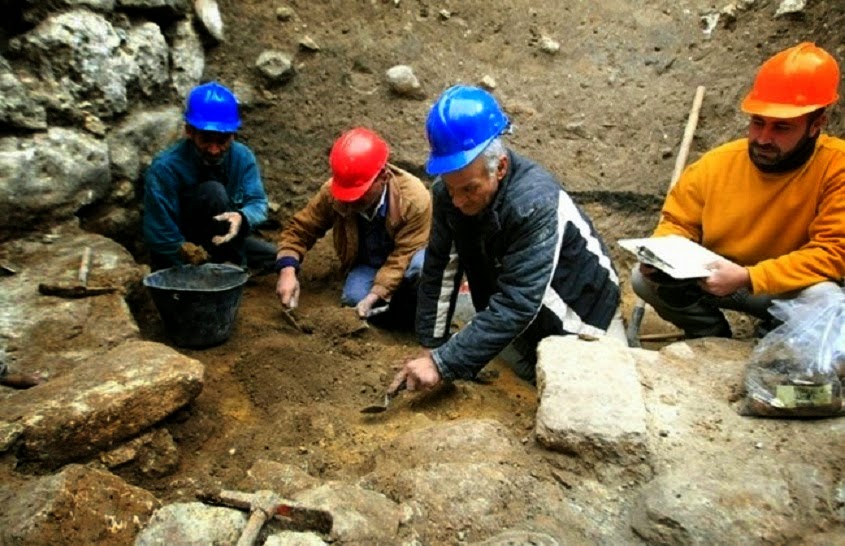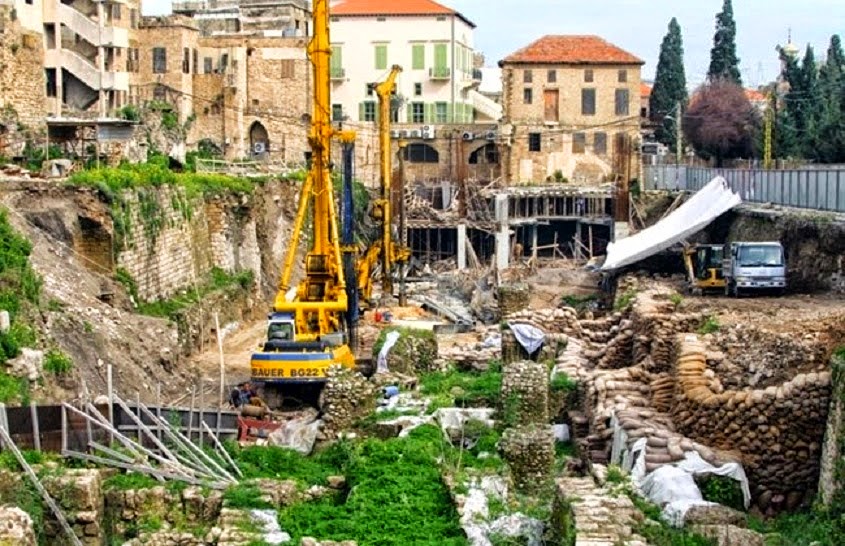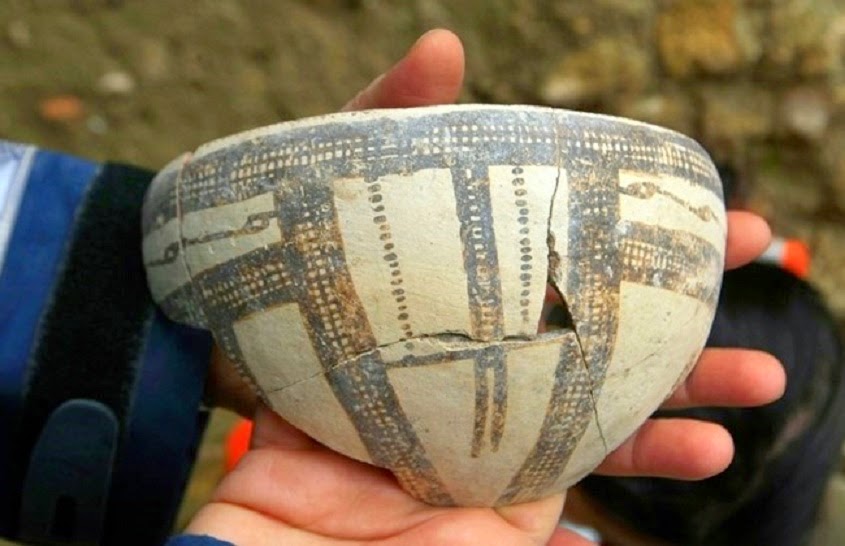In questo dissennato periodo - nel quale 'sacre' reliquie dell'Umanità intera vanno distrutte per cieco odio insensato di barbari - altre zone del Medio Oriente mostrano un'attitudine molto più razionale ed aperta.
Il fortunato ritrovamento di quello che sembrerebbe essere stata una stanza di un tempio di Sidone dell'età del Bronzo, rimasta fino ad oggi segreta (per la sovrapposizione di un edificio d'epoca persiana), è stato motivo per la nascita dell'ardito piano di realizzazione di un nuovo museo, che sarà il più importante del Medio Oriente e ostenterà reperti dal 3.000 a.C. al 1300 a.C.
Sono stati rapidamente reperiti i fondi (quelli che tanto mancano a tutta l'Archeologia, quella italiana in testa) godendo inaspettatamente della fortuna di tempi migliori, in cui
la ragionevolezza pacata della Scienza riesce a mettere d'accordo tutti.
Per un interesse comune.
Dozens of workers were busy covering old Sidon’s Frères archaeological site Monday, to protect a major new discovery unearthed by a delegation from the British Museum.
Archaeologists excavating old Sidon’s Frères archaeological site
[Credit: The Daily Star/Mohammed Zaatari]
“A small contingent of the British Museum/Directorate General of Antiquities of Lebanon team of archaeologists discovered a new deeply concealed room,” read a statement released by the delegation. The newly discovered monumental room is believed to be an extension of the underground Temple of Sidon, which dates back to the Bronze Age.
This finding comes as workers prepare the foundations of a new national museum, which will be established beside the archaeological site. Construction of the museum led to urgent excavations at the site last month.
Ten years ago, the delegation discovered an underground “holy of holies” room, dating back to 1300 B.C., where ancient residents are believed to have worshipped their gods.
The newly discovered room was found adjacent to it, and is thought to be an extension of the site’s temple. It is believed to have been used by high-status members of the community.
Claude Serhal Doumit, head of the delegation, described the finding as significant, and said the room had been concealed by later developments built over it.
View of old Sidon’s Frères archaeological site
[Credit: The Daily Star/Mohammed Zaatari]
“Sealed by the imposition of a Persian period building constructed on top of it, this new room is of the highest importance in terms of its monumentality and untouched pottery material, both [domestically produced] and imported from Cyprus and Mycenae,” read a statement released by the delegation.
The British Museum delegation conducted excavations at the Frères site for nearly 17 years, after receiving approval from the Directorate General of Antiquities.
The room’s walls were constructed with monumental stones to a height of 4.5 meters, while the floor of subterranean room would have been 7.5 meters below street level. Archaeologists unearthed a number of artifacts inside.
“Wooden material, pottery and utensils for ritual celebrations used for eating, drinking and mixing fluids were found,” Doumit told The Daily Star.
Sidon MP Bahia Hariri hailed the new discovery, saying it helped reveal the rich history of the ancient city.
Cypriot vase found at the newly unearthed concealed room
[Credit: The Daily Star/Mohammed Zaatari]
Hariri, who visited the Frères archaeological site Monday, praised the excavation work carried out by the Directorate General of Antiquities’ Sidon office and the British Museum delegation.
Sidon is a repository of many ruins, which reflect the various civilizations and cultures that inhabited the city.
Hariri believes that the finding will contribute to the city’s new museum, which in turn will revive south Lebanon’s economy and culturally.
Construction on the new national museum has been underway after workers broke ground in November of last year.
Grants by the Kuwaiti Fund for Arab Economic Development and the Arab Fund for Economic and Social Development have helped provide financing for its construction.
The Kuwaiti Fund has contributed $4 million to the project, while the Arab Fund has committed $850,000.
The museum will showcase artifacts and ruins from the various civilizations that inhabited Sidon, some of which date back to 3000 B.C.
Artefacts found at the newly unearthed concealed room
[Credit: The Daily Star/Mohammed Zaatari]
“The dream of creating a museum is coming true,” Doumit said. “This is will be one of the most important museums in the Middle East.”
The museum will be designed to preserve the site’s archaeological ruins in situ.
Pathways connecting ancient and modern Sidon will be created, in addition to a footbridge in the museum’s basement level that will show visitors where the ruins were discovered. “The ruins will be displayed on the museum’s upper floor,” said Doumit, who also stressed that every new discovery helps raise the profile of the new museum.
Over the years, the delegation has unveiled numerous archaeological ruins and artifacts, shedding light on the early history of Sidon.
More than 1,000 such artifacts, dating from the Bronze Age, Iron Age and Roman period will be showcased in the new space.
The landmark museum is expected to provide a boost to Sidon, the capital of the south, creating job opportunities for local residents and encouraging tourism in the region.
Author: Mohammed Zaatari
Source: The Daily Star [February 26, 2015]




